Best guitars for small hands 2025: compact, thinline and slim-necked options for all ages
Here's Guitar World's pick of the best compact electric and acoustic models from Fender, Taylor, Epiphone and more
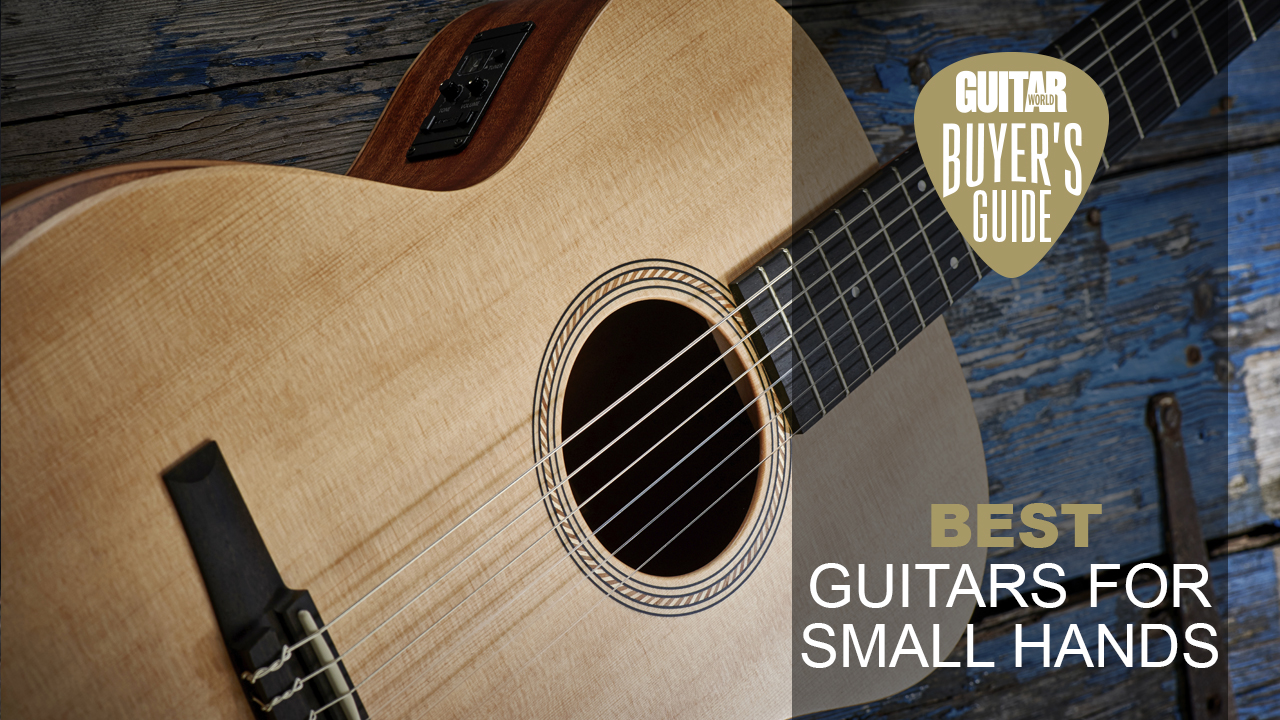
Whether you’re just starting out, you’re of a smaller physical stature, or you just find full-sized instruments too cumbersome, the best guitars for small hands can make for an altogether more pleasant playing experience.
Now obviously, smaller and younger players will immediately be at home with the best guitars for small hands. Children don’t quite have the same reach as adults, so having a guitar suited to them will mean that there’s less stretching involved, and could mean that they actually pursue learning the instrument for longer, and aren’t put off by uncomfortable playing conditions.
It’s not just kids though – many adults can find larger instruments a bit too bulky; whether that’s the scale length, neck shape or just overall size of the whole guitar.
The best guitars for small hands cover a range of bases – some might have really thin necks and are easier to reach around, some might have a shorter scale length and others might be shrunken down versions of bigger guitars.
You'll find my list below, but to get you started and give you my top pick straight away, I've gone for the Fender Player II Mustang. It's a great instrument packed full of features that includes Mustang pickups and Fender ClassicGear tuners. Its size also means that it'll still be useful even when young hands get a little bigger. A solid investment.
If you're after more information, head on down to my FAQ section.
The quick list

The Fender Player II Mustang's size may be small, but in terms of features and sound, it’s bigger and better than most other guitars in its price bracket.
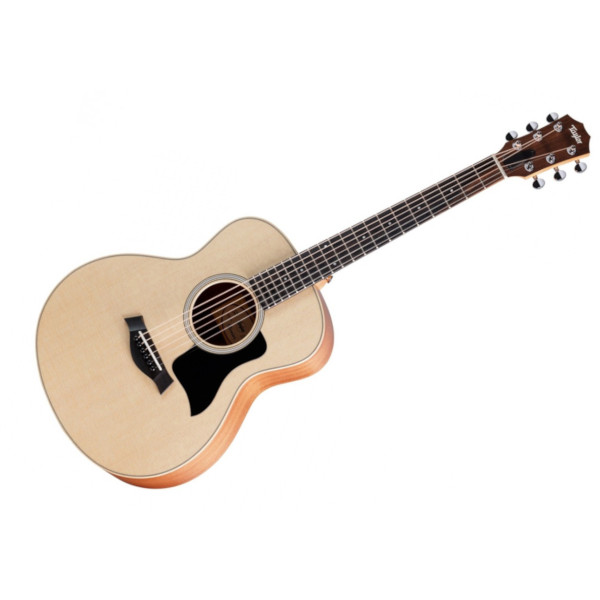
The majority of guitarists get their start on an acoustic guitar, but you can make things a lot easier on yourself by picking one with a short scale, like the excellent Taylor GS Mini Sapele.

With its fantastic sounding pickups and rich palette of finishes, the Epiphone Power Players Les Paul is perfect for the young rocker who wants a properly good electric guitar.
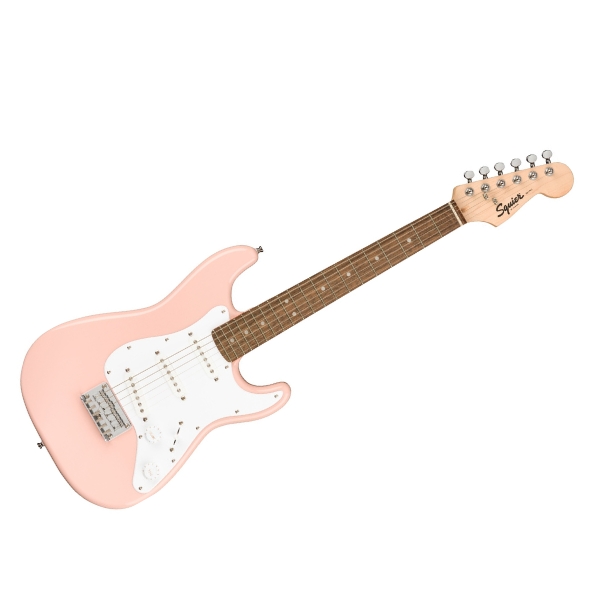
Based on one of the most popular guitar designs in the world, the Squier Mini Strat takes everything great about Fender's iconic axe and shrinks it to a more manageable size.

The perfect choice for the first timer, the Fender x Loog Telecaster is a 3-string electric guitar that makes taking those first steps on the instrument that much easier.
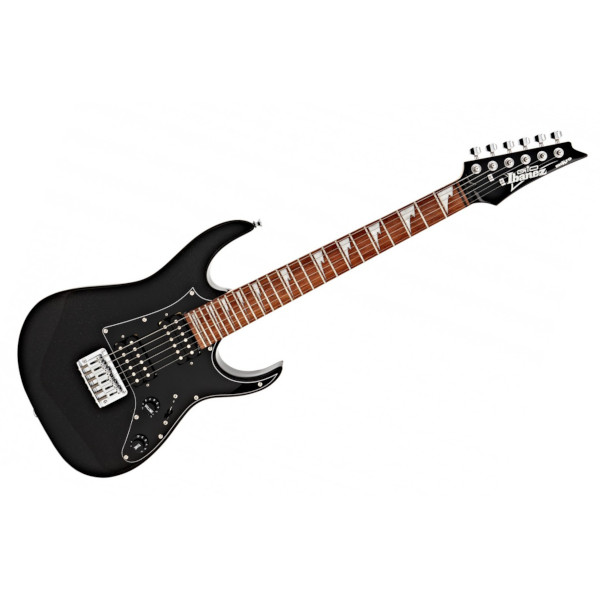
For the budding shredders and metalheads out there, the Ibanez GRGM21 Gio miKro comes with some serious guitar heritage, two powerful humbuckers, and fantastic playability.
Best overall
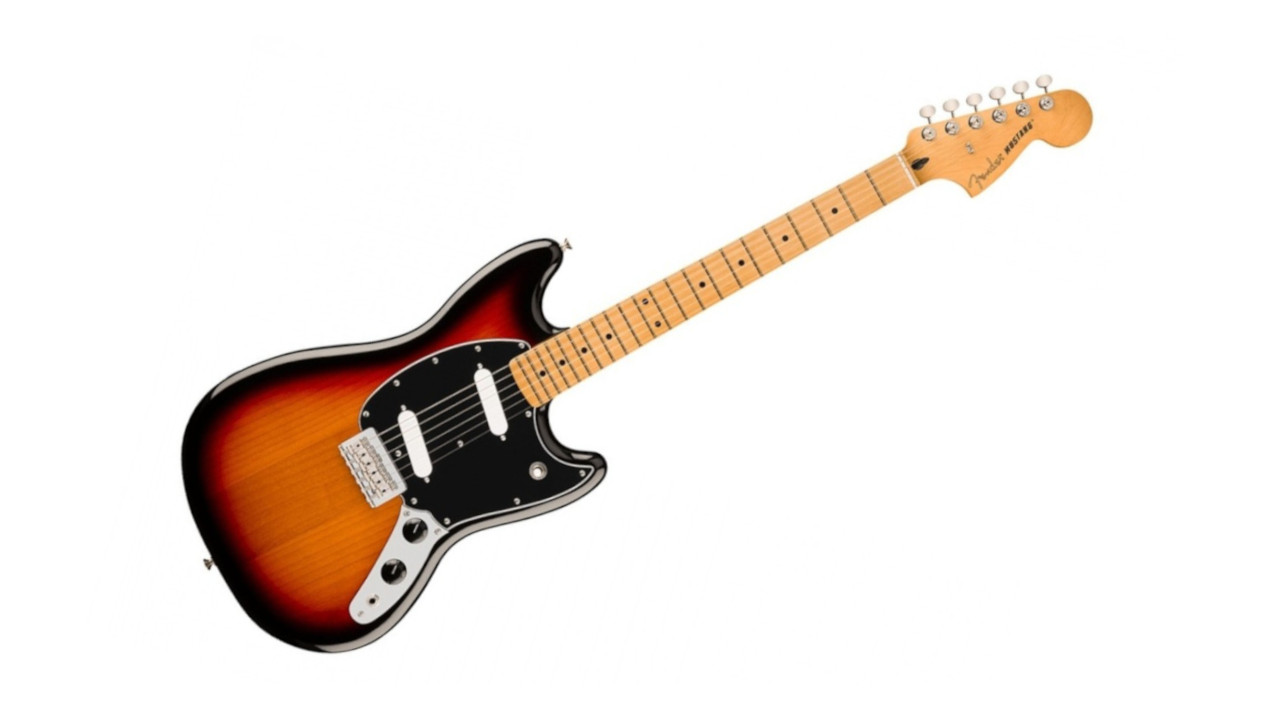
1. Fender Player II Mustang
Our expert review:
Specifications
Reasons to buy
Reasons to avoid
✅ Buy if you want a smaller electric with the Fender stamp of approval: The Player II Mustang is a great size but not too small so it'll still be playable when young hands get a little bigger.
❌ Avoid if you have really small hands: The Player II Mustang sits between a smaller guitar and full-sized instrument, so it might not suit very small hands.
Build: ★★★★½
Playability: ★★★★½
Sound: ★★★★½
Overall: ★★★★½
The Mustang was launched in 1964 as a student guitar, with smaller sizing and cheaper pricing compared to Fender’s premium range of instruments – including the Stratocaster and the Telecaster. Becoming a favorite of the indie scene due to its accessibility, the Mustang ascended beyond many other student guitars, becoming one of the iconic guitar shapes.
A shorter 24” scale-length means smaller players should find this really easy to pick up and play. The neck is also on the slimmer side, featuring a modern C-shape, which is round, but not fat, and allows smaller hands easier access to the fretboard.
The Fender Player II Mustang isn’t specifically for junior players, however it will be noticeably smaller than the kind of baseball bat necks you can expect to find on vintage Stratocasters. Rolled fingerboard edges, which are an upgrade seen on the Player II models, also improve the feel of the neck in the fretting hand.
The Fender Player II Mustang could be the perfect step up from a beginner guitar to top-class instrument and will continue to be a superb guitar even if the player’s hands get a little bigger.
Its size is small, but in terms of features (that include proper Fender Mustang pickups, Fender ClassicGear tuners and strings-through-body Strat hardtail bridge with bent steel saddles) and sound, it’s bigger and better than most other guitars in its price bracket.
Best acoustic
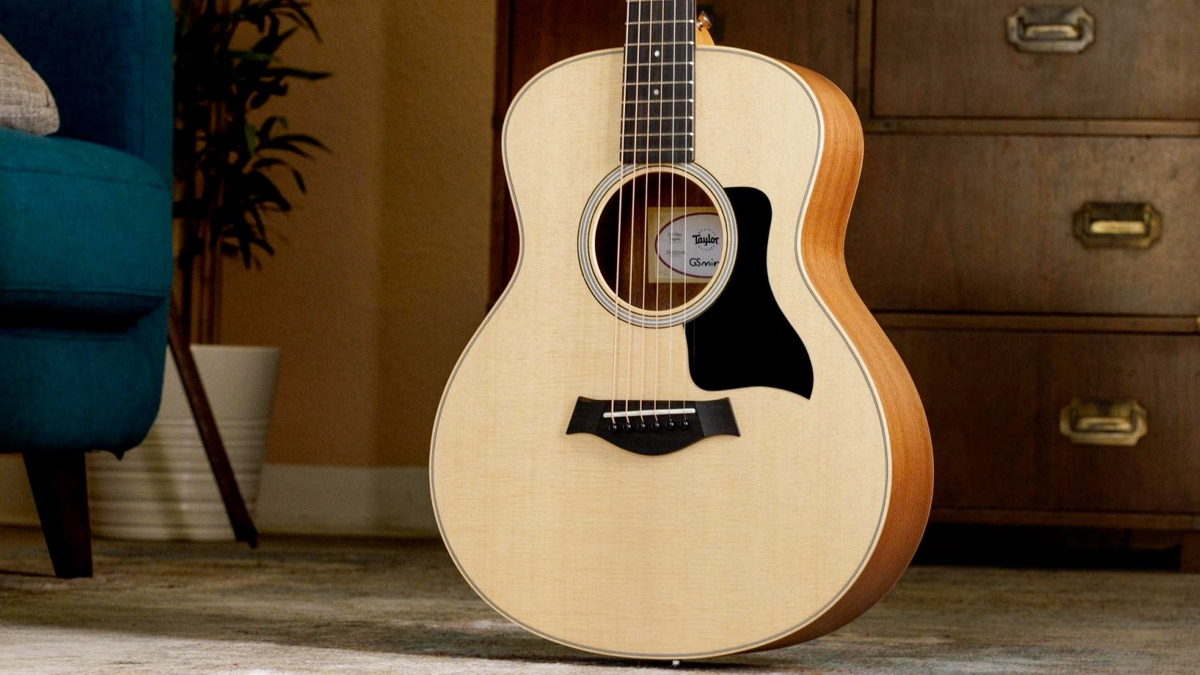
Specifications
Reasons to buy
Reasons to avoid
✅ Buy if you want a small-body acoustic that has superb tone: The GS Mini Sapele is easy to play and has a rich, full sound.
❌ Avoid if you want some bass notes from your acoustic: During testing, we found the bass response of the low E string was a bit subdued.
Build: ★★★★★
Playability: ★★★★½
Sound: ★★★★½
Overall: ★★★★½
Definitely one of the most popular non-full size acoustic guitars out there, the Taylor GS Mini helped redefine the potential of smaller guitars. Its body is smaller than most other acoustic guitars, but it still projects a rich, full sound with plenty of volume when you need it.
It isn’t just one of the best guitars for small hands, it’s one of the best guitars at its price point.
The whole thing is a slightly shrunken down version of Taylor’s Grand Symphony body shape. It’s got a fairly beefy low end (considering its size anyway), rich midrange and detailed treble frequencies.
There are a few different versions of this guitar with various wood combinations so there are options when it comes to honing in on the tone you want.
The scale length is a very easy to play 23.5” – short enough for small hands, but big enough so that it’s ideal for pretty much anyone else. The neck profile is fairly thin too, so again small hands shouldn’t have much trouble with fretting chords and single notes.

"The GS Mini Sapele remains the perfect choice for budget-conscious players who want the comfort and portability of a small-body acoustic without sacrificing big guitar tone."
Read more: Taylor GS Mini Sapele review
Best Les Paul
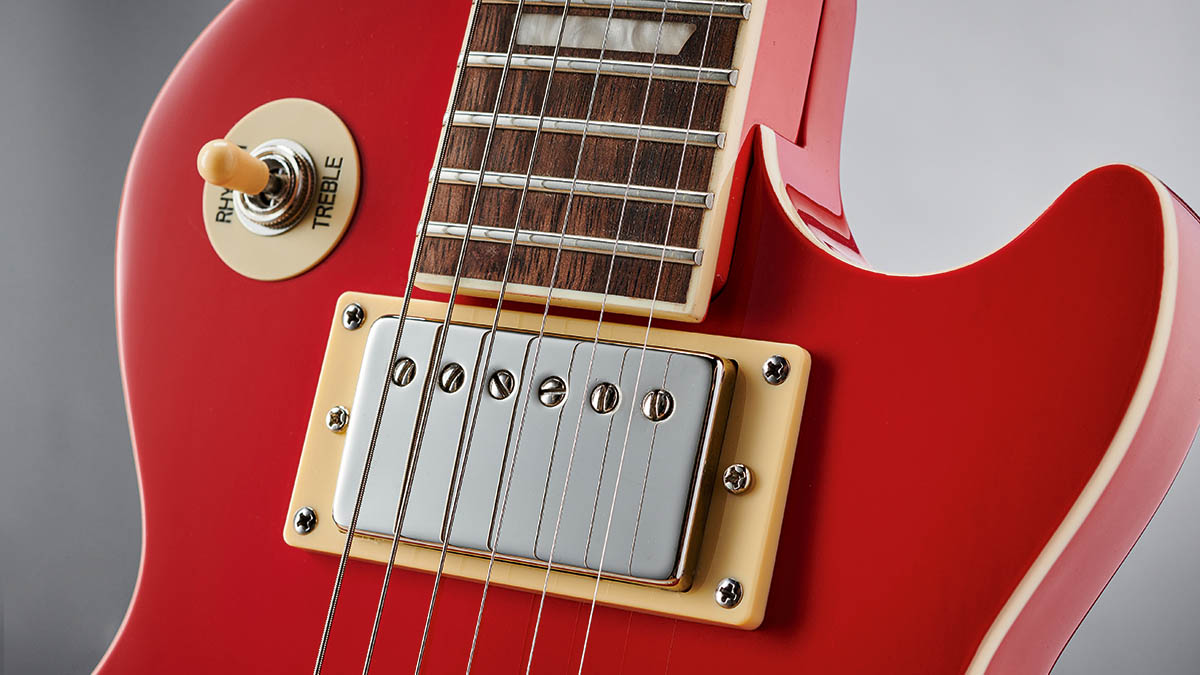
Specifications
Reasons to buy
Reasons to avoid
✅ Buy if you want a brilliant Les Paul at a smaller size: The Power Players has all the classic Les Paul features but it's smaller than the original models
❌ Avoid if a bolt-on neck is an issue for you: Les Paul purists may not jive with the bolt-on neck - and the price might also put some players off.
Build: ★★★★½
Playability: ★★★★
Sound: ★★★★
Overall: ★★★★
The Les Paul is a beast of a guitar in many ways, including its size, which isn’t really suitable for the small-handed player. Fortunately the Epiphone Power Player Les Paul addresses the size issue, while maintaining the classic features that are synonymous with the Les Paul, including high-quality components and Epiphone humbuckers that offer plenty of grunt.
The Power Players Les Paul is one of the best guitars for kids or players with smaller hands, or is a good contender for a travel instrument for seasoned players.
The bolt-on neck will not appeal to Les Paul purists, it has a comfortable slim-taper neck profile and a sculpted heel that means both rhythm and lead playing is a breeze.
Don’t be confused into thinking this is a toy, due to its shrunken body and reduced shorter 22.73” scale length – it feels well made and still delivers quintessential Les Paul tones, so players won’t feel short-changed.
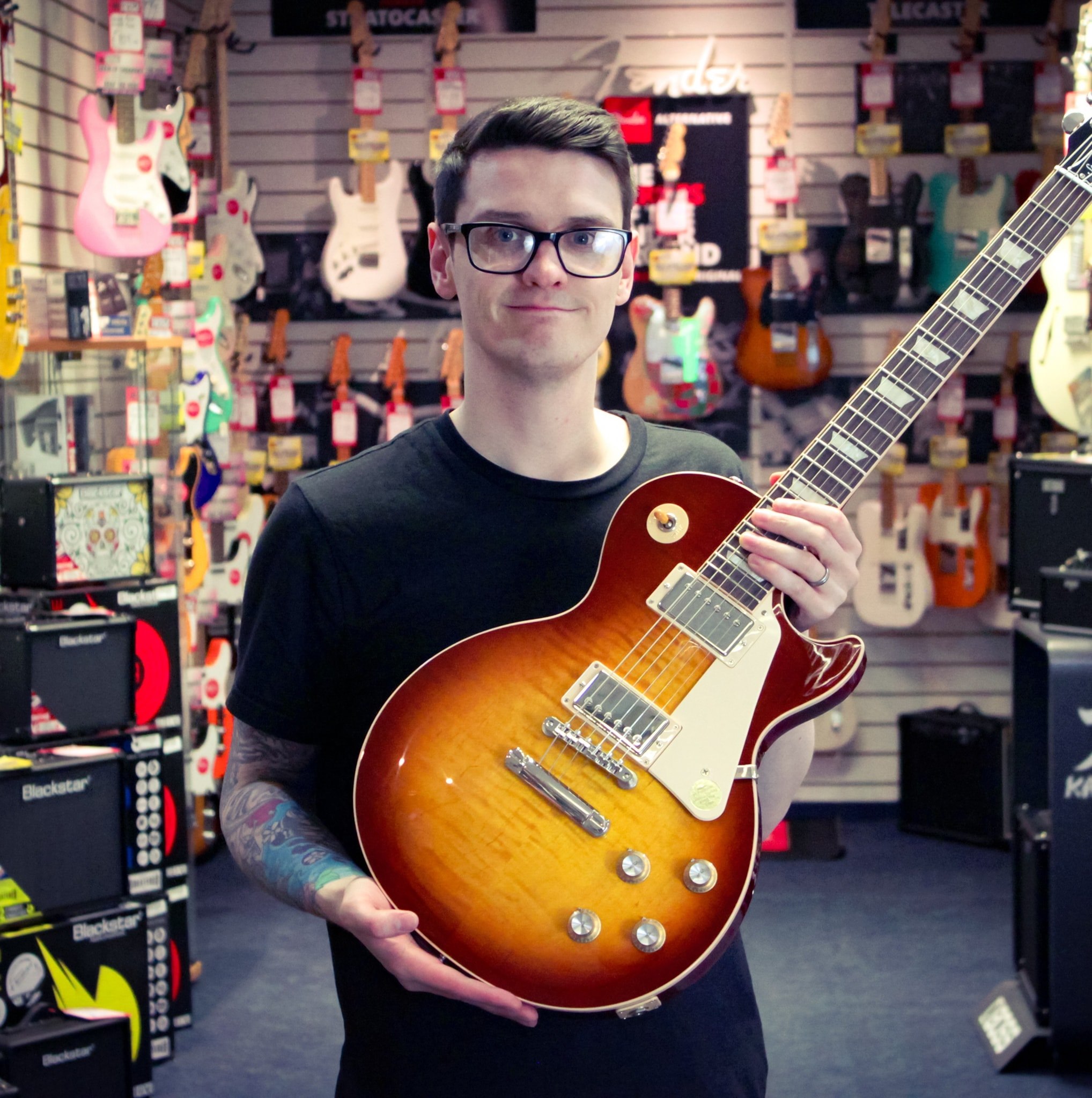
"If your little one is seeking that iconic tone, look and feel only a Les Paul or SG can deliver, then the Epiphone Power Players are definitely worth it. I certainly had a lot of fun playing them."
Read more: Epiphone Power Players Les Paul review
Best Strat

4. Squier Mini Strat
Our expert review:
Specifications
Reasons to buy
Reasons to avoid
✅ Buy if you classic Strat tones at a great price: This is a 3/4 sized electric guitar that's ideal for younger players and it's very well priced.
❌ Avoid if you're after a premium model: The components used here aren't of the highest quality, but good for the price point.
Build: ★★★★½
Playability: ★★★★½
Sound: ★★★★½
Overall: ★★★★½
If you want something classic, but don’t fancy the Les Paul, then look no further than the Stratocaster. This Squier Mini Strat is a 3/4 sized electric guitar, boasting the quintessential Strat features that fans have fallen in love with over the last 70 years.
It has three single-coil pickups married to a five-way pickup selector, giving you a broad range of tonal options, with the distinctive Strat voicing.
This is an ideal starting point for kids wanting to play the electric guitar. Everything has been scaled down, so the body, scale length and neck are all smaller, making it much more comfortable for small hands.
The neck has a nice and easy to play C profile, plus the body is slightly thinner, making it lighter. This feels more substantial than most miniature guitars though, and whilst the components aren’t of the highest quality, it doesn’t feel cheaply made.
As the sister company to Fender, which created the Stratocaster, Squier has the knowledge of what makes a great Strat. Many players will start their journey on cheap Stratocaster rip-offs, but going for the Squier Mini Strat is choosing authenticity, just in a format that suits smaller hands better.
Best for kids
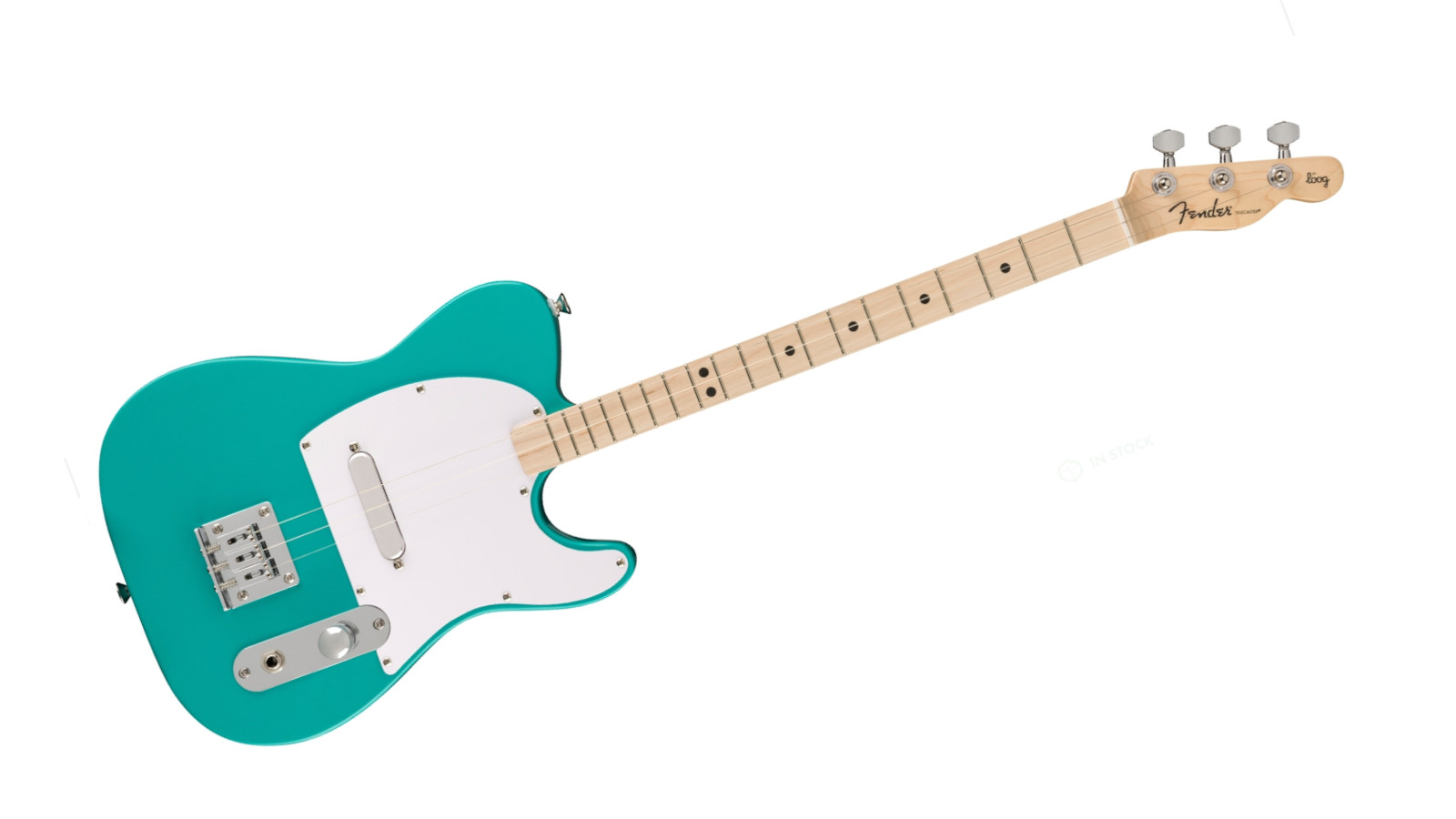
5. Fender x Loog Telecaster
Our expert review:
Specifications
Reasons to buy
Reasons to avoid
✅ Buy if you want to get your kid into playing guitar: This is a three-string instrument that's just perfect for kids looking to have fun.
❌ Avoid if your child is a little older: While the three-string nature is great for youngsters, older kids will want to move on to a six-string.
Build: ★★★★
Playability: ★★★★
Sound: ★★★★
Overall: ★★★★
Fender has teamed up with children’s guitar experts Loog to create a 3-string Telecaster with a super thin neck that is ideal for the smallest of small hands.
Taking the tried and tested Tele design and shrinking it down, the Fender Loog guitar is the perfect introductory electric guitar for particularly small individuals, and with half the number of strings, it’s not intimidating.
Chords are easier to fret, and with the thin neck design there’s a lot less wood for them to get their hands around. It even comes complete with a set of flashcards to help kickstart the learning process.
In terms of the sound it can make, it’s a little like a cross between a guitar and a ukulele, or like a guitar with a capo on fairly high up – but there’s still that unmistakable Telecaster bite!
It isn’t a ‘proper’ guitar, in the traditional sense, so players looking for a full-fat electric, but a little smaller, should look elsewhere, but this remains an excellent starting point for kids looking to have fun.
Best for shred
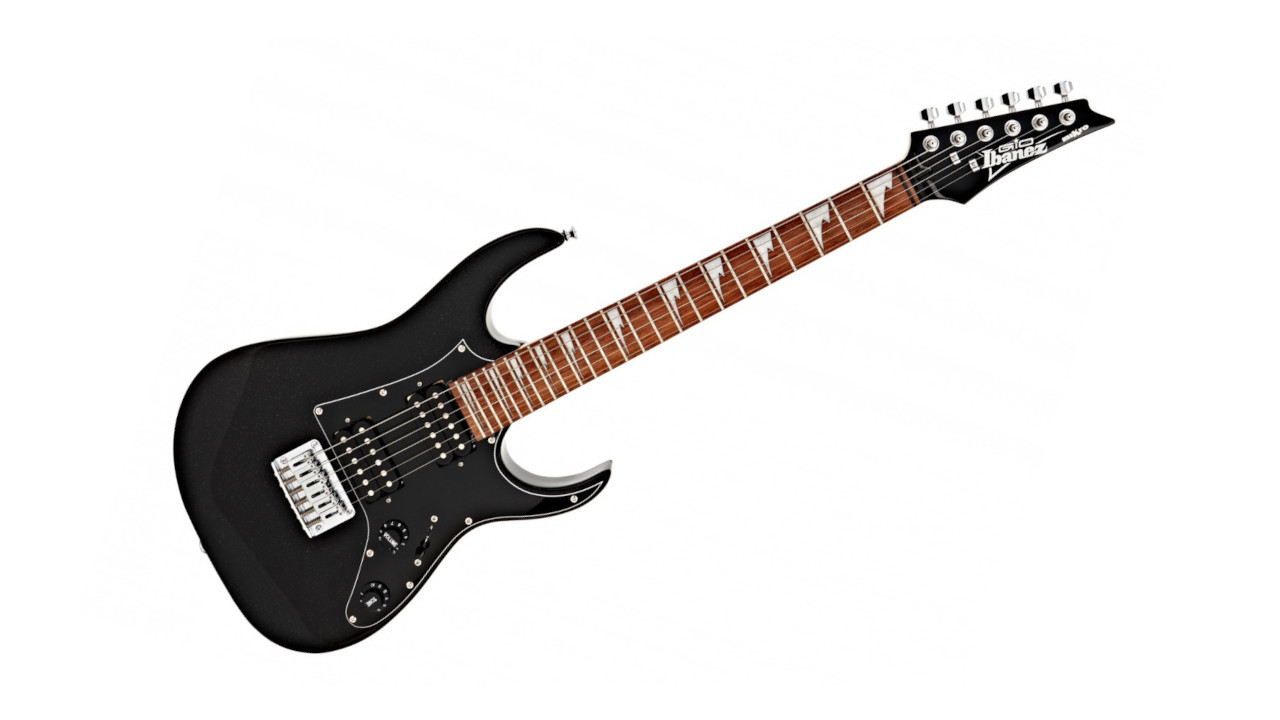
6. Ibanez GRGM21 Gio miKro
Our expert review:
Specifications
Reasons to buy
Reasons to avoid
✅ Buy if you're a metal fan moving from acoustic to electric: This is an ideal guitar for young shredders and comes from one of hard rock's most famous brands.
❌ Avoid if metal's not really your thing: The clean tones here aren't quite as refined as other guitars in the list.
Build: ★★★★½
Playability: ★★★★½
Sound: ★★★★
Overall: ★★★★½
This guitar is loads of fun to play. If you’re just starting out, or perhaps you’re moving from acoustic to your first electric, then this offering from one of rock and metal’s most iconic brands can provide you with everything you need. It also makes for a great travel companion for more experienced players.
The Ibanez GRGM21 Gio miKro is fitted with two humbucking pickups that can dish out high powered rock tones, as well as more subtle sounds.
There’s a five-way selector so you can actually get a wide range of tones from these two pickups. Whether you’re wanting to play rock, pop, metal or anything else, this compact guitar has you covered! The only caveat is that the clean tones aren’t quite as good as others on this list.
The 24 frets cover the 22.2” scale length, and the neck profile is fairly small and thin, making it a dream to play for small hands. It’s built well, and the price is super reasonable for what you get.
Watch out demo video:

"The Ibanez miKro GRGM21 is a great little guitar, suitable for both kids wanting to start out and experienced adults who just want a fun, portable electric guitar."
Read more: Ibanez GRGM21 Gio miKro review
Best hollow body
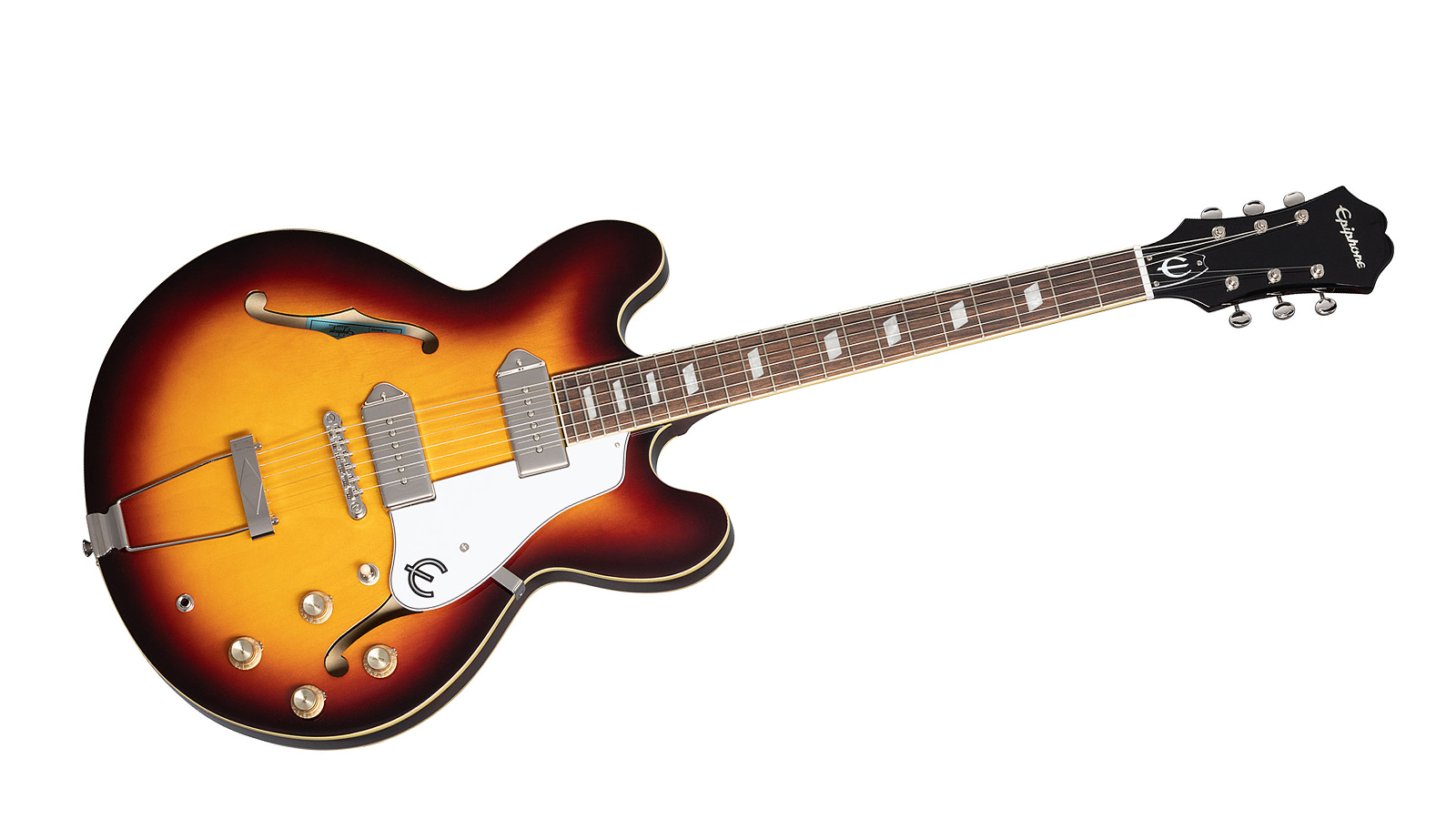
Specifications
Reasons to buy
Reasons to avoid
✅ Buy if you want a full-sounding guitar that also looks fantastic: The Epiphone Casino is a full-size guitar but thanks to its slim taper to the neck, it's comfortable to play.
❌ Avoid if a big-body guitar seems daunting: The body here may be too large for smaller players.
Build: ★★★★
Playability: ★★★★
Sound: ★★★★½
Overall: ★★★★
If you’re looking to buy a guitar for small hands, the last thing you would probably think of is a large, hollow-body electric, but there is an option out there for you.
The Casino is a legendary guitar that dates all the way back to 1961, appearing on stage with the likes of The Beatles. Over the years it has been refined, but kept the qualities that have made it beloved.
Featuring two P90 pickups that pair brilliantly with its hollow body, the Casino has really unique sonic characteristics that would be hard to replicate on a smaller guitar.
It comes equipped with a D-shape neck that players may think would feel particularly chunky in the hand, but Epiphone has added a slim taper to the neck that makes it far more manageable, providing that vintage neck shape and feel, without the drawback of vintage-neck-girth.
For players with smaller bodies, it may not be the most comfortable, but if you’re looking for a hollow-body guitar, with a manageable neck, this could surprise you.
Best for metal
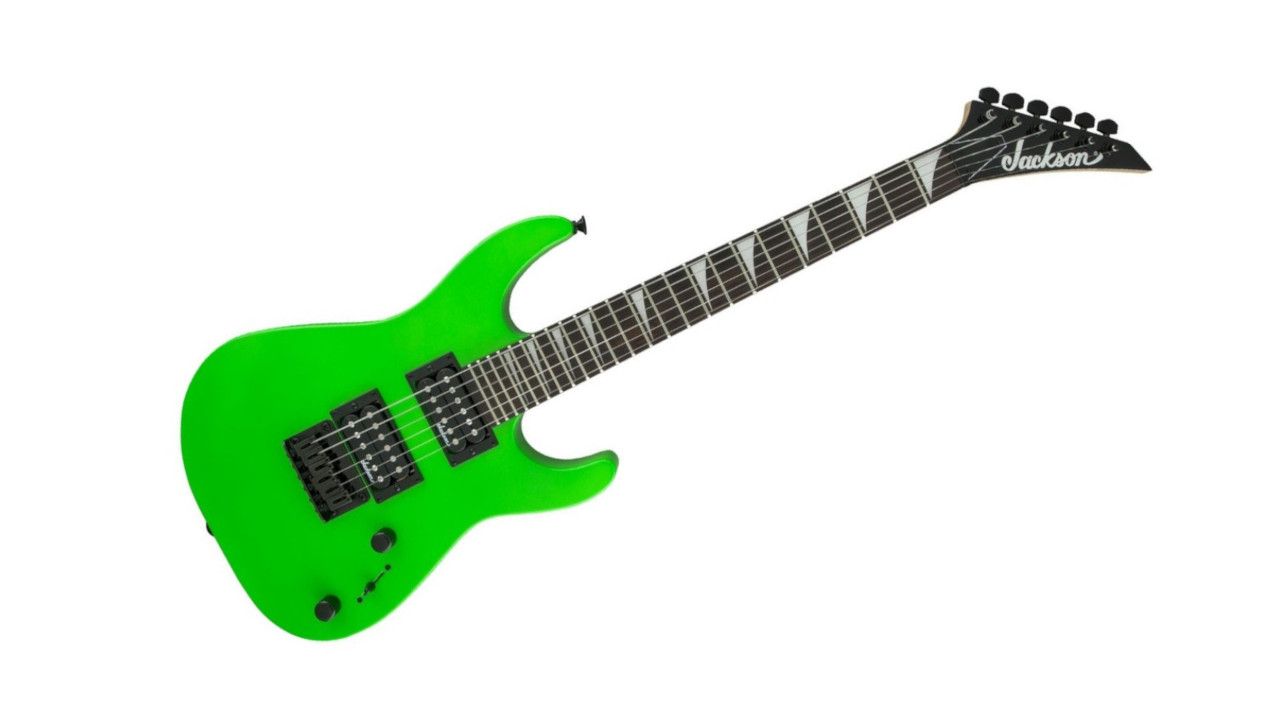
8. Jackson Dinky JS1X
Our expert review:
Specifications
Reasons to buy
Reasons to avoid
✅ Buy if you want a sharp looking electric that stands out from the crowd: This will cater for those looking to give their playing a metal edge - and it looks amazing.
❌ Avoid if you're not into metal or hard rock: This is better suited to those who want to add overdrive or distortion to their playing.
Build: ★★★★½
Playability: ★★★★½
Sound: ★★★★½
Overall: ★★★★½
The Jackson Dinky JS1X could well be one of the most unique looking guitars for small hands, so if you want to stand out, then look no further.
Its sleek body design, sharp-edged headstock and eye-catching finishes really help declare that you’re here and you mean business.
Its vibe isn’t the only thing that screams heavy metal though. The Jackson JS1X is fitted with two high-output humbuckers that deliver powerful but crisp tones capable of keeping up with any full-sized counterpart.
If you’re playing clean parts most of the time then this might not be the best choice, but for anything using overdrive, distortion or fuzz, this is a great option.
Overall, it comes in at around 2/3 size making fretting chords and lead lines a whole lot easier. The smaller body shape also means that small hands can reach around to where they need to be easily too.
Other options
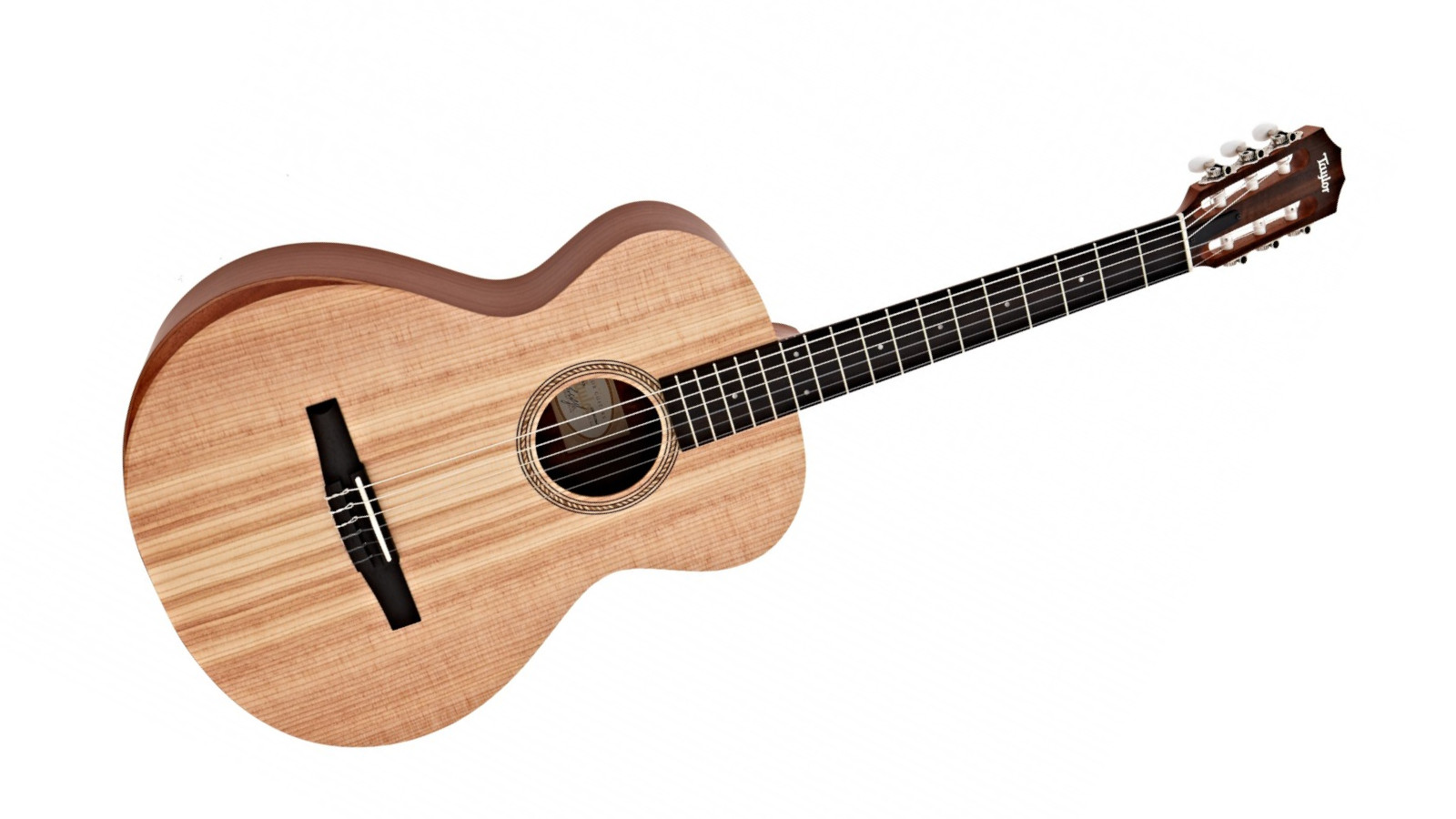
9. Taylor Academy 12e-N
Our expert review:
Specifications
Reasons to buy
Reasons to avoid
✅ Buy if you want a more mellow tone: The nylon strings give the Academy 12e-N a rich, warm tone.
❌ Avoid if you're after something smaller: This is slightly bigger than some guitars in the list - and it's pricey.
Build: ★★★★½
Playability: ★★★★
Sound: ★★★★½
Overall: ★★★★½
Nylon strings are softer than steel strings so can be a good option for beginners, or for those that just prefer a mellower tone.
While this model errs on the larger side of my pick of the best guitars for small hands, it’s still a great option due to its slightly narrower nut width.
Nylon string guitars often have wide, chunky necks, whereas on this, the neck is smaller. The space between the strings has been reduced so that there is less strain on the fretting hand, and the neck is easy to get your fingers around.
The idea behind the Academy series was to create the best guitars for the most amount of people, for the least amount of cash. The result is a range of incredible guitars that produce fantastic tone and are really playable.
If you’ve got smaller hands, and you want the softer feel and mellower sound of nylon strings, then this is one of the best guitars you can get.
It isn’t cheap by any means, but you’ll easily get away with this for any sort of live performance or recording session.

"Its price makes it better suited for the more committed learner, but you’ll struggle to find a beginner’s classical guitar with this much quality anywhere else."
Read more: Taylor Academy 12e-N review
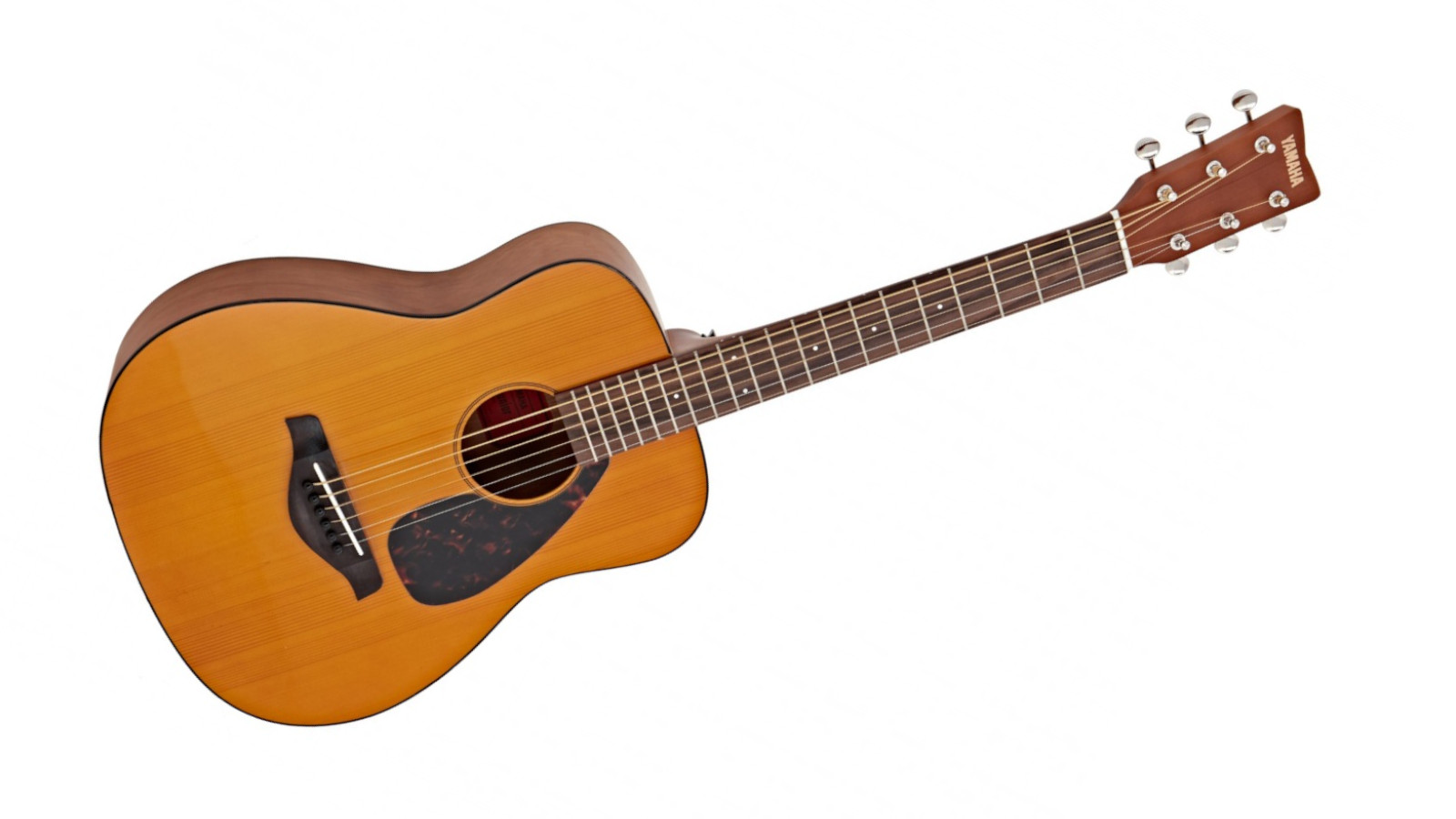
10. Yamaha JR1
Our expert review:
Specifications
Reasons to buy
Reasons to avoid
✅ Buy if you're a beginner looking for an entry level acoustic: The Yamaha JR1 is a 3/4 size and for the price, it sounds good.
❌ Avoid if you're a more experienced player: The tone isn't as good as a full-size guitar so veterans should look elsewhere.
Build: ★★★★
Playability: ★★★★
Sound: ★★★★
Overall: ★★★★
This is a simple, stripped-back 3/4 size acoustic guitar. It has everything you need to start playing the guitar, and nothing you don’t.
It being a 3/4 sized instrument, the whole thing has essentially been shrunk down to make it more comfortable for smaller hands to play. It’s got a 21.25” scale length, so the frets are closer together than they would be on a full size. The body being smaller also makes it easier for smaller players to get their arm around to strum or pick.
For the price, it sounds pretty good. You don’t get quite the same tone as you would do with a solid top or full size guitar, but given its price point and size, it’s one of the best in its class.
It’s perfect for beginners just starting out, or even for more experienced players who want a compact acoustic guitar to take traveling with them. It even comes shipped with a gig bag. Something that really helps make a difference are the quality tuners that help the guitar stay in tune.
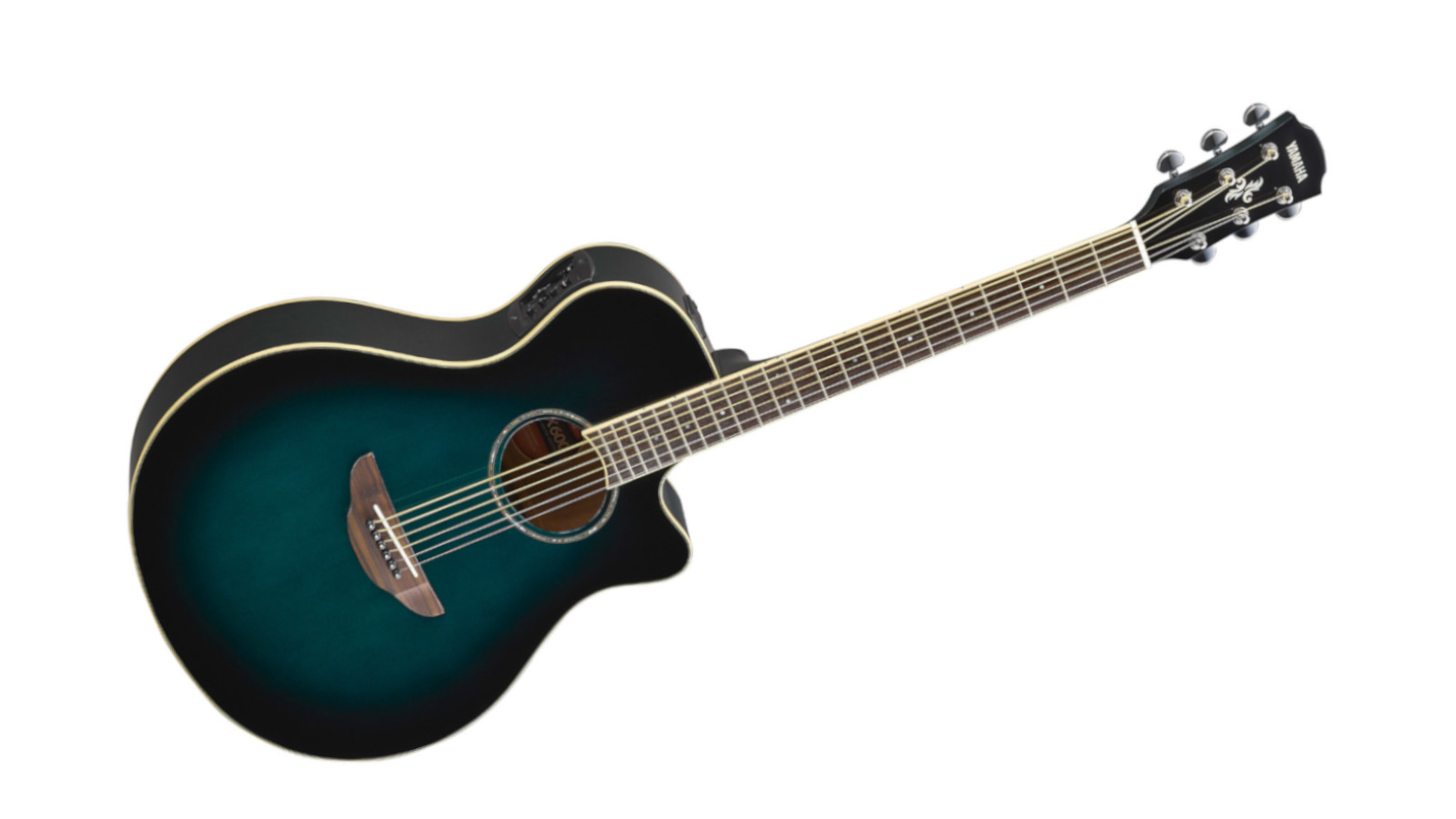
11. Yamaha APX600
Our expert review:
Specifications
Reasons to buy
Reasons to avoid
✅ Buy if you're looking for a hugely playable electro-acoustic: This is a full-sized guitar, but it's extremely playable thanks to its thin neck and body.
❌ Avoid if you have medium-sized hands: This just might be a little too small for slightly larger hands and the 25” scale length might put people off.
Build: ★★★★
Playability: ★★★★½
Sound: ★★★★
Overall: ★★★★
This is a full size electro-acoustic guitar, however it’s got a really thin neck, slightly shorter scale length and a thin body, making it perfect for players that don’t necessarily want a smaller guitar, but still need something that’s comfortable for smaller hands.
The APX range has been going for a while. This model offers amazing value for money; it sounds great played acoustically on its own, but is also fitted with a good quality pickup and preamp so it’s well suited to gigging.
The neck profile is nice and thin, so it’s easy for smaller hands to wrap around, and the body depth is great for those with smaller arms too.
There are some really nice finishes available for the APX-600, so you can pick something that suits the sort of visual style that you’re going for.
It’s a great guitar – easy to play, built well, good features and perfect for small hands.
FAQs

Should I choose acoustic or electric?
Upon choosing the best guitar for small hands, you’ll first want to decide whether to go acoustic or electric. If you’re just starting out, neither one is ‘right’ per se; simply go for the one that attracts you more.
If the music you want to play features more electric guitar, then go for that; if it’s acoustic then that’s fine too. A common misconception that gets thrown around is that you should play an acoustic guitar first because it will make playing electric easier. While there’s an element of truth in that, you’ll do better to learn on the instrument you actually want to play.
In standard tuning, both electric and acoustic guitars are tuned the same way – EADGBE which means scales and chords are fretted in exactly the same way, so if you want to move from one to the other, everything is transferrable.
However, it's always going to be the case that acoustic guitars will have slightly larger, deeper bodies than electric counterparts and this could be an issue for players with smaller arms too, though many acoustic manufacturers produce ¾ size models that even the smallest player should be able to contend with.
Small hands don’t always equal tiny bodies, of course, and thankfully many manufacturers have full-sized guitars with more slender necks. Even the likes of larger semi-hollow electric guitars can feature smaller necks, so you don’t necessarily need a tiny instrument.
What do I need to know about tuning on smaller guitars?
Many of the guitars that are better suited to people with smaller hands will have shorter scale lengths, which means the overall length of the playable part of their guitar neck will be smaller. This is great for people with smaller hands as they can easily navigate their way up and down the neck, but does present some other things to consider.
Given the shorter length, tuning your guitar into standard tuning (EADGBE) with standard strings will mean the strings have less tension. This is particularly noticeable on short-scale bass guitars, which require specific strings. Fortunately short-scale acoustic and electric guitars typically cope just fine with standard strings, though it may be worth considering thicker gauges if you enjoy playing in drop tunings.
What is scale length?
The scale length of a guitar is the length between the nut at the top and the string saddles/bridge at the bottom. It’s effectively how long the string is. With shorter scale guitars, the frets are packed more closely together, so the distance between them is less than it is on a long, or regular scale, guitar. This can make fretting chords that span multiple frets easier.
If you were to take a regular scale guitar and play a lick that starts at the 2nd fret then moves to the 5th then 7th, and then perform the same thing on a short scale guitar, you would have to either stretch or move less on the short scale.
What about the girth of the neck?
You can trust Guitar World
One of the most important factors in your quest to find the best guitar for small hands is the shape and size of the neck. Different brands have different ways of classifying and measuring the neck thickness, but generally if you see the word ‘thin’ in there somewhere, then it’s a good sign.
If you see the nut width, then that helps determine the distance between the top and bottom strings. The smaller the nut width, the shorter the distance between top E and bottom E which means the strings are packed more closely together and so small hands might find it easier to fret chords.
You may see a letter associated with neck profiles when buying a guitar; It’s not some kind of code, it is to do with the shape of the neck and relates to how a cross-section of the neck would look.
For example, a C-shape neck would be very round in the hand, which makes it easier for the fingers to wrap around and reach the fretboard. The C-shape is the most common neck shape around and many Fenders come equipped with it. A V-shape neck on the other hand would be much more angular, and U-shaped necks – often referred to as baseball bat necks – have a deeper curve. Both the V and U neck profiles typically are less comfortable for people with smaller hands.
There is a common misconception that Gibson guitars have fat necks and Fenders have thinner necks, but this isn’t always the case. Different models in manufacturers’ ranges will have slightly different neck shapes, so make sure to do your research before ordering a guitar on reputation alone, as it may not fit your hands as well as you’d like.
Should I choose 3/4, 2/3 or full size?
Many of the best guitars for small hands are simply shrunken versions of full sized instruments. You can get guitars as small as 1/8 size, though some of the picks on this list are around 2/3 or 3/4-sized.
At this size, you tend to still get a 'proper' guitar sound, and it’s probably going to be tuned the same way as a full-size instrument, however it’s much more user-friendly for those with smaller hands.
How we choose the best guitars for small hands
At Guitar World, our team is comprised of seasoned players and experts deeply attuned to the nuances of guitar design. With years of playing and extensive product testing, we bring a wealth of experience to the intricate world of guitars. Our passion extends to every aspect of guitar playing, and this expertise is honed by utilizing instruments in live performances, recording studios, and rehearsal spaces. This wealth of experience forms the foundation for our curated recommendations in various guitar categories.
When it comes to identifying the best guitars for players with smaller hands, we embark on a thorough selection journey. Our process involves combining hands-on experience, insights from user reviews, and comprehensive discussions with our editorial team. This ensures a proper evaluation, providing a well-informed guide to the top guitars tailored for those with smaller hands.
As dedicated guitarists ourselves, our foremost mission is to assist fellow players in finding instruments that perfectly suit their unique needs. We meticulously consider factors ranging from budget considerations to the specific design features that cater to players with smaller hands. The outcome is a thoughtfully curated list representing what we confidently assert to be the best guitars for small hands on the market today.
Why you can trust us
☑️ A global audience of 3.8 million guitarists monthly
☑️ 1,200+ reviews on GuitarWorld.com
☑️ 30+ years of product testing at Guitar World
Guitar World has more than 44 years of expertise and stands as the ultimate authority on all things related to guitars. The magazine and website feature expertly written gear round-ups and top-quality, authoritative reviews penned by a team of highly experienced industry professionals.
Guitar World's inaugural print issue hit the shelves in July 1980, and ever since, it has been captivating players and enthusiasts with engaging lessons, insightful interviews with the biggest guitar heroes, and priceless buying advice for newbie players.
Furthermore, GuitarWorld.com continues this legacy online and serves as the hub of the world's foremost authorities on guitar playing.
The site not only hosts content from Guitar World but also showcases articles from respected publications such as Guitarist, Total Guitar, Guitar Techniques, and Bass Player. With a reach extending to 3.8 million players each month, GuitarWorld.com is a go-to destination for guitar fanatics globally.
Meet the experts

After spending a decade in music retail, I’m now a freelance writer for Guitar World, MusicRadar, Guitar Player and Reverb, specialising in electric and acoustic guitars, bass, and almost anything else you can make a tune with. When my head’s not buried in the best of modern and vintage gear, I run a small company helping musicians with songwriting, production and performance, and I play bass in an alt-rock band.

Matt is a Junior Deals Writer here at Guitar World. He regularly tests and reviews music gear with a focus on guitars, amps, pedals, modelers, and pretty much anything else guitar-related. Responsible for over 60 buying guides, a large part of his role is helping guitarists find the best deals on gear. Matt worked in music retail for 5 years at Dawsons Music and Northwest Guitars and has written for various music sites including MusicRadar, Guitar Player, Guitar.com, Ultimate Guitar, and Thomann’s t.blog.
Latest updates
30/07/25: The guide has received four new product entries: Fender Player II Mustang, Taylor GS Mini Sapele, Ibanez GRGM21 Gio miKro and the Jackson Dinky JS1X. Expert verdict boxes have been added to product entries where applicable, while each guitar now has "At a glance" panels and star ratings. The FAQ section includes new content, and a section explaining why you can trust the GuitarWorld team has also been included. Finally, a meet the experts section has been added to the guide.
Read more:
- Check out the best acoustic guitars for beginners
- Start rocking with the best electric guitars for beginners
- Get all you need with the best accessories for beginners
- Get low with the best bass guitars for beginners
- Chug and shred with the best beginner guitars for metal
All the latest guitar news, interviews, lessons, reviews, deals and more, direct to your inbox!
After spending a decade in music retail, I’m now a freelance writer for Guitar World, MusicRadar, Guitar Player and Reverb, specialising in electric and acoustic guitars, bass, and almost anything else you can make a tune with. When my head’s not buried in the best of modern and vintage gear, I run a small company helping musicians with songwriting, production and performance, and I play bass in an alt-rock band.
- Matt McCrackenJunior Deals Writer
